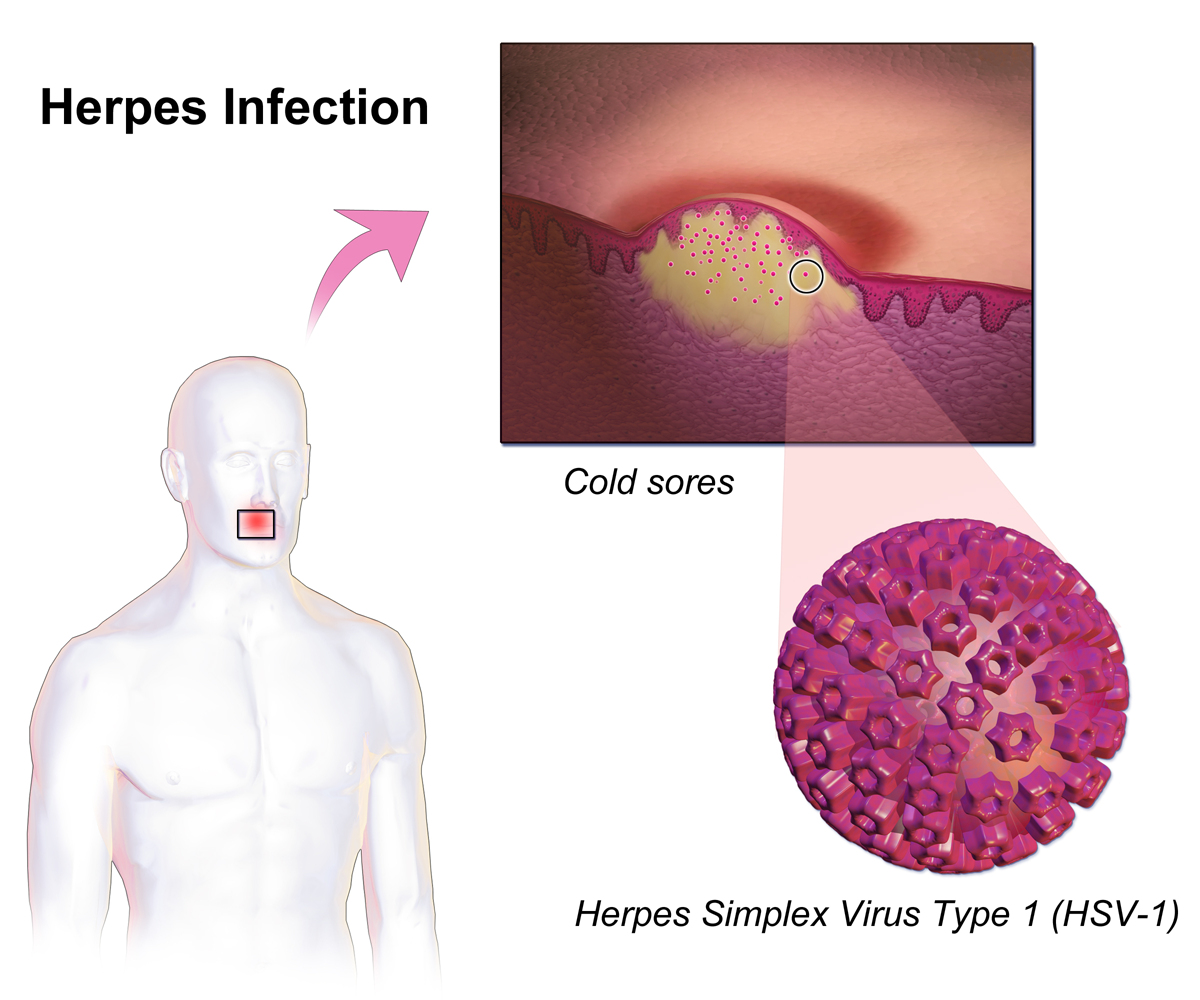|
Encephalitis
Encephalitis is inflammation of the Human brain, brain. The severity can be variable with symptoms including reduction or alteration in consciousness, aphasia, headache, fever, confusion, a stiff neck, and vomiting. Complications may include seizures, hallucinations, trouble speaking, memory problems, and problems with hearing. Causes of encephalitis include viruses such as herpes simplex virus and rabies virus as well as bacteria, fungi, or parasites. Other causes include autoimmune diseases and certain medications. In many cases the cause remains unknown. Risk factors include a immunosuppression, weak immune system. Diagnosis is typically based on symptoms and supported by blood tests, medical imaging, and analysis of cerebrospinal fluid. Certain types are preventable with vaccines. Treatment may include antiviral medications (such as acyclovir), anticonvulsants, and corticosteroids. Treatment generally takes place in hospital. Some people require artificial respiration. Once ... [...More Info...] [...Related Items...] OR: [Wikipedia] [Google] [Baidu] |
Herpes Simplex Encephalitis
Herpes simplex encephalitis (HSE), or simply herpes encephalitis, is encephalitis due to herpes simplex virus. It is estimated to affect at least 1 in 500,000 individuals per year, and some studies suggest an incidence rate of 5.9 cases per 100,000 live births. About 90% of cases of herpes encephalitis are caused by herpes simplex virus-1 (HSV-1), the same virus that causes cold sores. According to a 2006 estimate, 57% of American adults were infected with HSV-1, which is spread through droplets, casual contact and sometimes sexual contact, though most infected people never have cold sores. The other 10% of herpes encephalitis cases are due to HSV-2, which is typically spread through sexual contact and is the cause of genital herpes. Two-thirds of HSE cases occur in individuals already seropositive for HSV-1, few of whom (only 10%) have history of recurrent orofacial herpes, while about one third of cases results from an initial infection by HSV-1, predominantly occurring in indi ... [...More Info...] [...Related Items...] OR: [Wikipedia] [Google] [Baidu] |
West Nile Encephalitis
West Nile fever is an infection by the West Nile virus, which is typically spread by mosquitoes. In about 80% of infections people have few or no symptoms. About 20% of people develop a fever, headache, vomiting, or a rash. In less than 1% of people, encephalitis or meningitis occurs, with associated neck stiffness, confusion, or seizures. Recovery may take weeks to months. The risk of death among those in whom the nervous system is affected is about 10%. West Nile virus (WNV) is usually spread by mosquitoes that become infected when they feed on infected birds, which often carry the disease. Rarely the virus is spread through blood transfusions, organ transplants, or from mother to baby during pregnancy, delivery, or breastfeeding, but it otherwise does not spread directly between people. Risks for severe disease include being very young, over 60 years old, having weak immune system, and having other health problems. Diagnosis is typically based on symptoms and blood test ... [...More Info...] [...Related Items...] OR: [Wikipedia] [Google] [Baidu] |
Eastern Equine Encephalitis
Eastern equine encephalitis (EEE), also called triple E and sleeping sickness, is a viral disease caused mainly by the Eastern equine encephalitis virus (EEEV). Most infections in humans are asymptomatic, but about 5% of the time the infection progresses to severe neuroinvasive disease. Symptoms typically appear 3–10 days after being bitten by an infected mosquito and initially include fever, headache, nausea, vomiting, fatigue, muscle pain, and joint pain. Neurological symptoms usually appear a few days later and include altered mental state, encephalitis, photophobia, seizures, paralysis, and loss of consciousness and coma. The case fatality rate is 30–75% depending on age, with disease severity greatest in young children and the elderly. About 50 to 90% of survivors experience long-term neurological complications that range from minor to severe. EEE is most common in horses, in which the disease carries a 70–90% case fatality rate and permanent brain damage for survivors. ... [...More Info...] [...Related Items...] OR: [Wikipedia] [Google] [Baidu] |
Herpes Simplex
Herpes simplex, often known simply as herpes, is a viral disease, viral infection caused by the herpes simplex virus. Herpes infections are categorized by the area of the body that is infected. The two major types of herpes are Cold sore, oral herpes and genital herpes, though Herpes simplex#Types of herpes, other forms also exist. Oral herpes involves the face or mouth. It may result in small blisters in groups, often called cold sores or fever blisters, or may just cause a sore throat. Genital herpes involves the genitalia. It may have minimal symptoms or form blisters that break open and result in small ulcers. These typically heal over two to four weeks. Tingling or shooting pains may occur before the blisters appear. Herpes cycles between periods of active disease followed by periods without symptoms. The first episode is often more severe and may be associated with fever, muscle pains, swollen lymph nodes and headaches. Over time, episodes of active disease decrease in ... [...More Info...] [...Related Items...] OR: [Wikipedia] [Google] [Baidu] |
Rabies
Rabies is a viral disease that causes encephalitis in humans and other mammals. It was historically referred to as hydrophobia ("fear of water") because its victims panic when offered liquids to drink. Early symptoms can include fever and abnormal sensations at the site of exposure. These symptoms are followed by one or more of the following symptoms: nausea, vomiting, violent movements, uncontrolled excitement, fear of water, an inability to move parts of the body, confusion, and loss of consciousness. Once symptoms appear, the result is virtually always death. The time period between contracting the disease and the start of symptoms is usually one to three months but can vary from less than one week to more than one year. The time depends on the distance the virus must travel along Peripheral nervous system, peripheral nerves to reach the central nervous system. Rabies is caused by lyssaviruses, including the rabies virus and Australian bat lyssavirus. It is spread when an i ... [...More Info...] [...Related Items...] OR: [Wikipedia] [Google] [Baidu] |
Seizure
A seizure is a sudden, brief disruption of brain activity caused by abnormal, excessive, or synchronous neuronal firing. Depending on the regions of the brain involved, seizures can lead to changes in movement, sensation, behavior, awareness, or consciousness. Symptoms vary widely. Some seizures involve subtle changes, such as brief lapses in attention or awareness (as seen in absence seizures), while others cause generalized convulsions with loss of consciousness ( tonic–clonic seizures). Most seizures last less than two minutes and are followed by a postictal period of confusion, fatigue, or other symptoms. A seizure lasting longer than five minutes is a medical emergency known as status epilepticus. Seizures are classified as provoked, when triggered by a known cause such as fever, head trauma, or metabolic imbalance, or unprovoked, when no immediate trigger is identified. Recurrent unprovoked seizures define the neurological condition epilepsy. Clinical features Seizur ... [...More Info...] [...Related Items...] OR: [Wikipedia] [Google] [Baidu] |
Aphasia
Aphasia, also known as dysphasia, is an impairment in a person's ability to comprehend or formulate language because of dysfunction in specific brain regions. The major causes are stroke and head trauma; prevalence is hard to determine, but aphasia due to stroke is estimated to be 0.1–0.4% in developed countries. Aphasia can also be the result of brain tumors, epilepsy, autoimmune neurological diseases, brain infections, or neurodegenerative diseases (such as dementias). To be diagnosed with aphasia, a person's language must be significantly impaired in one or more of the four aspects of communication. In the case of progressive aphasia, a noticeable decline in language abilities over a short period of time is required. The four aspects of communication include spoken language production, spoken language comprehension, written language production, and written language comprehension. Impairments in any of these aspects can impact functional communication. The difficulties o ... [...More Info...] [...Related Items...] OR: [Wikipedia] [Google] [Baidu] |
Seizure
A seizure is a sudden, brief disruption of brain activity caused by abnormal, excessive, or synchronous neuronal firing. Depending on the regions of the brain involved, seizures can lead to changes in movement, sensation, behavior, awareness, or consciousness. Symptoms vary widely. Some seizures involve subtle changes, such as brief lapses in attention or awareness (as seen in absence seizures), while others cause generalized convulsions with loss of consciousness ( tonic–clonic seizures). Most seizures last less than two minutes and are followed by a postictal period of confusion, fatigue, or other symptoms. A seizure lasting longer than five minutes is a medical emergency known as status epilepticus. Seizures are classified as provoked, when triggered by a known cause such as fever, head trauma, or metabolic imbalance, or unprovoked, when no immediate trigger is identified. Recurrent unprovoked seizures define the neurological condition epilepsy. Clinical features Seizur ... [...More Info...] [...Related Items...] OR: [Wikipedia] [Google] [Baidu] |
Memory Problem
Amnesia is a deficit in memory caused by brain damage or brain diseases,Gazzaniga, M., Ivry, R., & Mangun, G. (2009) Cognitive Neuroscience: The biology of the mind. New York: W.W. Norton & Company. but it can also be temporarily caused by the use of various sedative and hypnotic drugs. The memory can be either wholly or partially lost due to the extent of damage that is caused. There are two main types of amnesia: * Retrograde amnesia is the inability to remember information that was acquired before a particular date, usually the date of an accident or operation. In some cases, the memory loss can extend back decades, while in other cases, people may lose only a few months of memory. * Anterograde amnesia is the inability to transfer new information from the short-term store into the long-term store. People with anterograde amnesia cannot remember things for long periods of time. These two types are not mutually exclusive; both can also occur simultaneously. Case studie ... [...More Info...] [...Related Items...] OR: [Wikipedia] [Google] [Baidu] |
Headache
A headache, also known as cephalalgia, is the symptom of pain in the face, head, or neck. It can occur as a migraine, tension-type headache, or cluster headache. There is an increased risk of Depression (mood), depression in those with severe headaches. Headaches can occur as a result of many conditions. There are a number of different classification systems for headaches. The most well-recognized is that of the International Headache Society, which classifies it into more than 150 types of Primary headache disorder, primary and secondary headaches. Causes of headaches may include dehydration; fatigue; sleep deprivation; Stress (biology), stress; the effects of medications (overuse) and recreational drugs, including withdrawal; viral infections; loud noises; head injury; rapid ingestion of a very cold food or beverage; and dental or sinus issues (such as sinusitis). Treatment of a headache depends on the underlying cause, but commonly involves analgesic, pain medication (esp ... [...More Info...] [...Related Items...] OR: [Wikipedia] [Google] [Baidu] |
Antiviral Medication
Antiviral drugs are a class of medication used for treating viral infections. Most antivirals target specific viruses, while a broad-spectrum antiviral is effective against a wide range of viruses. Antiviral drugs are a class of antimicrobials, a larger group which also includes antibiotic (also termed antibacterial), antifungal and antiparasitic drugs, or antiviral drugs based on monoclonal antibodies. Most antivirals are considered relatively harmless to the host, and therefore can be used to treat infections. They should be distinguished from virucides, which are not medication but deactivate or destroy virus particles, either inside or outside the body. Natural virucides are produced by some plants such as eucalyptus and Australian tea trees. Medical uses Most of the antiviral drugs now available are designed to help deal with HIV, herpes viruses, the hepatitis B and C viruses, and influenza A and B viruses. Viruses use the host's cells to replicate and this make ... [...More Info...] [...Related Items...] OR: [Wikipedia] [Google] [Baidu] |





